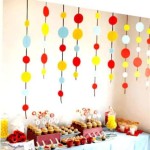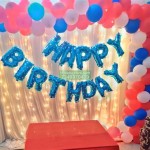DIY Floor Mirror Decorating Ideas: Enhancing Space and Style
Floor mirrors, beyond their functional purpose, serve as significant decorative elements capable of transforming the ambiance and perception of a room. They can create an illusion of greater space, amplify light, and add a touch of elegance or personality depending on the design. Engaging in do-it-yourself (DIY) floor mirror decorating allows for customization and cost-effectiveness, enabling individuals to tailor the mirror's aesthetic to complement their existing decor and personal style. This article will explore various DIY approaches to enhance a floor mirror, focusing on materials, techniques, and design considerations.
Framing Techniques and Material Choices
The frame of a floor mirror is a crucial element that dictates its overall appearance. The material used and the technique employed in framing significantly impact the mirror's aesthetic compatibility with the surrounding environment. Numerous framing options exist, each offering a distinct style and requiring varying levels of DIY skill.
One popular option involves using wood to construct a frame. Wood provides a versatile base that can be stained, painted, or distressed to achieve a desired look. Common wood types include pine, oak, and reclaimed wood. Pine is often chosen for its affordability and ease of workability, while oak offers a more substantial and classic appearance.
For a rustic or vintage aesthetic, reclaimed wood presents an environmentally friendly and stylistically unique option. Reclaimed wood can be sourced from old barns, pallets, or other discarded wooden structures. The inherent imperfections and history embedded in reclaimed wood add character and visual interest to the mirror frame. Before utilizing reclaimed wood in a DIY project, it is crucial to clean and treat it to prevent insect infestations and ensure structural integrity.
The construction of a wooden frame typically involves measuring and cutting the wood to the desired dimensions, followed by assembling the pieces using wood glue, screws, or nails. Once assembled, the frame can be sanded to create a smooth surface and then finished with stain, paint, or a protective sealant. Distressing techniques, such as sanding edges or applying a crackle finish, can further enhance the vintage or rustic appeal.
Alternatively, metal framing offers a sleek and contemporary look. Metal frames can be constructed from materials such as steel, aluminum, or wrought iron. Steel provides durability and a modern industrial feel, while aluminum is lightweight and resistant to corrosion. Wrought iron offers a more ornate and traditional aesthetic.
Working with metal requires specialized tools and skills, including welding or soldering. However, simpler metal framing techniques can be achieved using pre-fabricated metal corners and adhesive. These corners can be attached to the mirror using a strong adhesive, creating a clean and minimalist metal frame. Metal frames can be painted or powder-coated to achieve the desired color and finish.
For a more unconventional approach, consider using alternative materials such as rope, mosaic tiles, or even repurposed items like driftwood or branches. Rope can be wrapped around the mirror's edge to create a nautical or bohemian-inspired frame. Mosaic tiles can be adhered to a wooden base to create a colorful and eye-catching frame. Driftwood or branches can be arranged and attached to the mirror's edge to create a natural and organic frame.
Regardless of the material chosen, careful attention to detail is essential in ensuring a well-constructed and aesthetically pleasing frame. Accurate measurements, precise cuts, and secure attachments are crucial for a professional-looking result. The frame should also be appropriately sized to the mirror, allowing for a balanced and visually harmonious composition.
Embellishment and Decorative Accents
Beyond the frame, embellishments and decorative accents can further enhance the appearance of a floor mirror, transforming it from a functional item into a statement piece. Various decorative elements can be incorporated to add texture, color, and personality to the mirror.
One popular embellishment technique involves adding decorative trim or molding to the frame. Trim and molding come in a wide variety of styles, materials, and sizes, allowing for customization to suit different design preferences. Options include ornate Victorian-style molding, simple geometric trim, and contemporary minimalist designs.
Trim and molding can be attached to the frame using adhesive or small nails. Once attached, they can be painted or stained to match or complement the frame. Decorative trim can add depth, dimension, and visual interest to the mirror.
Another option involves incorporating natural elements into the mirror's design. Seashells, pebbles, or stones can be adhered to the frame to create a beach-inspired or nature-themed look. These elements can be arranged in a symmetrical pattern or a more free-form design, depending on the desired aesthetic.
To protect the mirror and create a smooth surface for adhesion, consider applying a layer of sealant or varnish to the frame before adding the natural elements. A strong adhesive, such as epoxy or construction adhesive, is recommended for securely attaching the seashells, pebbles, or stones.
Fabric can also be used to embellish a floor mirror. Fabric can be wrapped around the frame to create a soft and textured look. Different types of fabric, such as velvet, linen, or burlap, can be used to achieve varying styles. Velvet adds a touch of luxury and elegance, while linen offers a more casual and rustic feel. Burlap adds a textural element and complements farmhouse or bohemian decor.
The fabric can be attached to the frame using fabric glue or staples. To ensure a smooth and professional finish, it is important to stretch the fabric tightly and evenly around the frame. Decorative buttons, ribbons, or trim can be added to further enhance the fabric's appearance.
Paint techniques can also be used to embellish a floor mirror. Stencils can be used to create intricate patterns or designs on the frame. Different paint colors and finishes can be layered to achieve unique effects. For example, a distressed paint finish can be created by applying multiple layers of paint and then sanding away some of the layers to reveal the underlying colors.
Metallic accents can also add a touch of glamour and sophistication to a floor mirror. Gold or silver leaf can be applied to the frame to create a luxurious look. Metallic paint or spray paint can also be used to add subtle shimmer and shine.
When choosing embellishments and decorative accents, it is important to consider the overall style and aesthetic of the room. The embellishments should complement the existing decor and enhance the mirror's overall appearance. A cohesive and well-coordinated design will create a visually appealing and harmonious space.
Placement and Lighting Considerations
The placement and lighting surrounding a floor mirror significantly influence its effectiveness in enhancing the space and creating a desired ambiance. Careful consideration of these factors can maximize the mirror's impact and contribute to a more visually appealing and functional environment.
Strategic placement of a floor mirror can create the illusion of greater space. Placing the mirror on a wall opposite a window or doorway can reflect light and create a sense of openness. This is particularly effective in small rooms or rooms with limited natural light. The mirror will reflect the existing light, making the space appear brighter and more expansive.
In narrow hallways or corridors, placing a floor mirror along one wall can visually widen the space. The mirror will reflect the opposite wall, creating the illusion of a more spacious and less confined area. This can be particularly helpful in creating a more welcoming and less claustrophobic atmosphere.
When placing a floor mirror, it is important to consider the items that will be reflected. Avoid placing the mirror in a location that reflects clutter or unsightly objects. The mirror should reflect visually appealing elements, such as artwork, plants, or decorative furniture, to enhance the overall aesthetic of the room.
The angle of the mirror also plays a crucial role in its effectiveness. Tilting the mirror slightly can enhance its ability to reflect light and create a more dynamic visual effect. Experiment with different angles to find the optimal placement for maximizing the mirror's impact.
Lighting is another critical factor to consider when decorating with a floor mirror. Proper lighting can enhance the mirror's reflective properties and create a more flattering and inviting atmosphere. Natural light is always preferable, but if natural light is limited, artificial lighting can be used to supplement it.
Placing a lamp near the floor mirror can create a warm and inviting glow. The light will reflect off the mirror, creating a soft and diffused illumination that enhances the room's ambiance. Choose a lamp with a shade that complements the mirror's design and the overall decor of the room.
Alternatively, string lights can be draped around the mirror's frame to create a whimsical and festive look. String lights add a touch of sparkle and can transform the mirror into a focal point. Choose string lights with warm white bulbs for a cozy and inviting atmosphere, or opt for colored lights for a more playful and vibrant look.
Avoid placing the floor mirror in direct sunlight, as this can cause glare and potentially damage the mirror's surface over time. Direct sunlight can also create harsh shadows and make the room feel too bright. It is best to place the mirror in a location with indirect sunlight or use sheer curtains to filter the light.
Consider the function of the room when determining the placement and lighting for the floor mirror. In a bedroom, the mirror is often used for dressing and grooming, so adequate lighting is essential. In a living room, the mirror can be used to create a more social and inviting atmosphere, so softer and more diffused lighting is often preferred.
By carefully considering the placement and lighting surrounding a floor mirror, it is possible to maximize its impact and create a more visually appealing and functional space. The mirror can be transformed from a simple functional item into a powerful decorative element that enhances the room's ambiance and creates a more enjoyable environment.

Diy Floor Mirror Liz Marie Blog

Diy Floor Mirror Liz Marie Blog

Large Standing Floor Mirror Love Home Decor Rustic Mirrors

10 Ways To Decorate With Floor Mirrors That Are Right On Trend Bob Vila

Best Diy Floor Mirror Tutorials Deonna Wade Flooring Home Decor

Diy Floor Mirror Liz Marie Blog

Diy Floor Mirror Liz Marie Blog

Easy Diy Anthropologie Mirror Dupe Make It For A Lot Less Design To Build

10 Ways To Decorate With Floor Mirrors That Are Right On Trend Bob Vila

37 Floor Mirror Decorating Ideas
Related Posts







